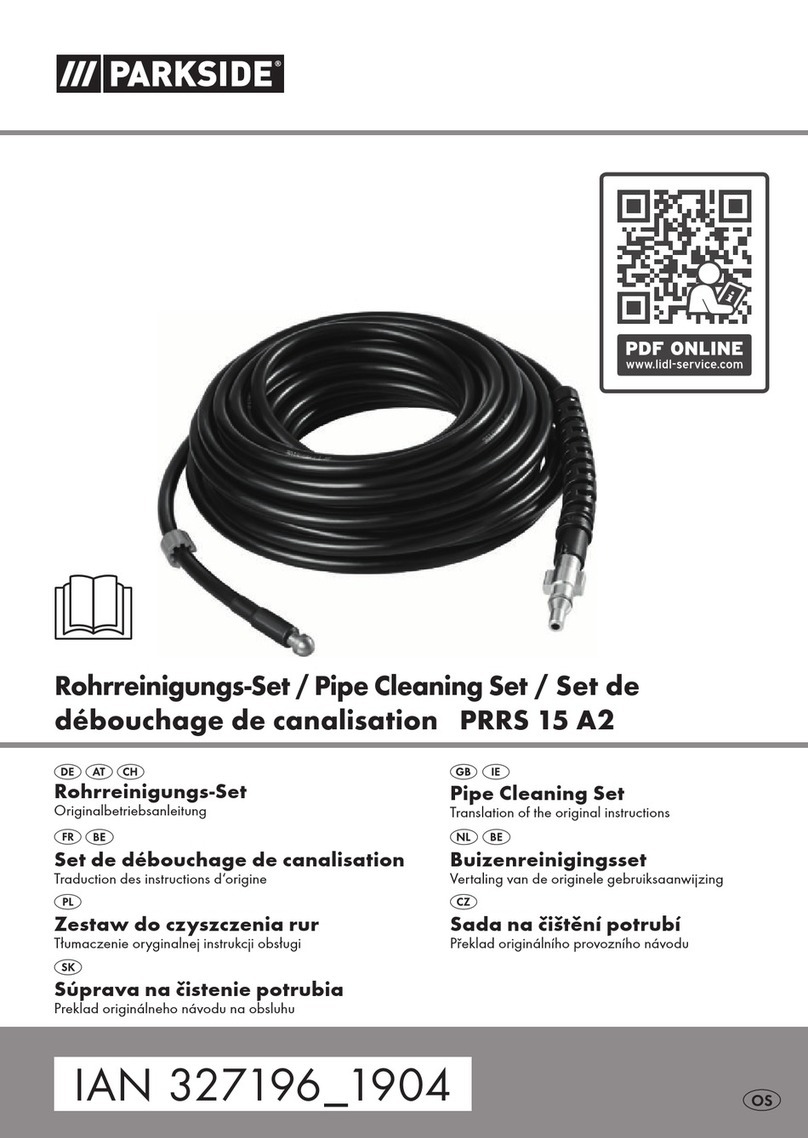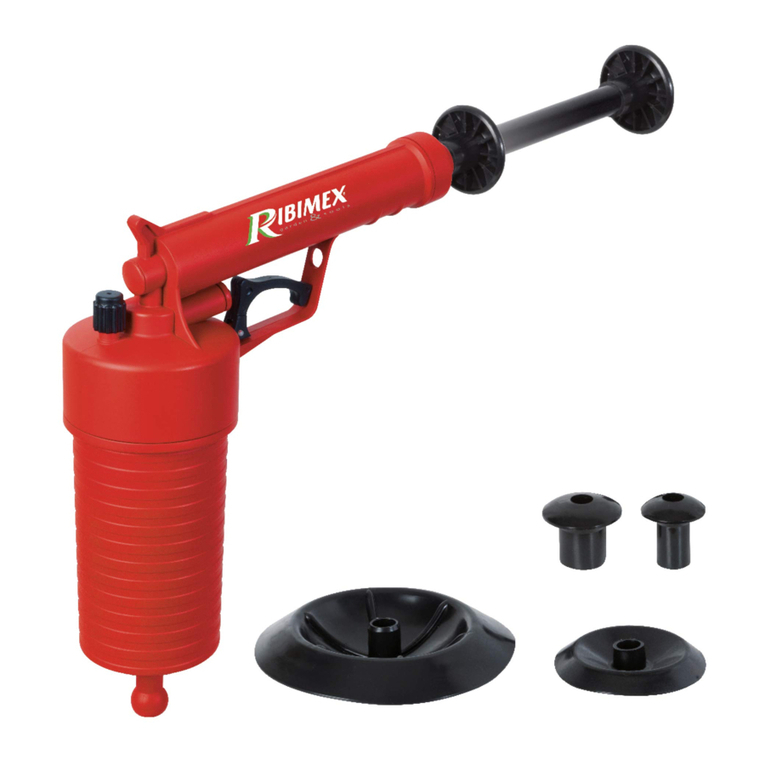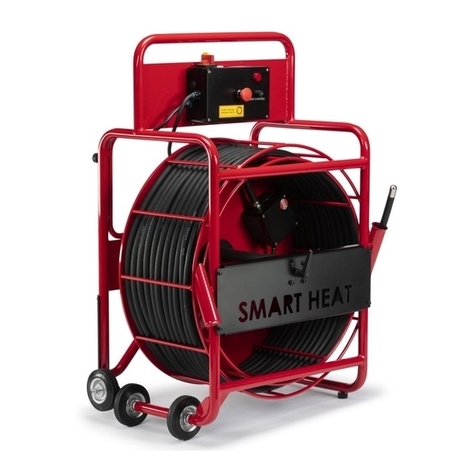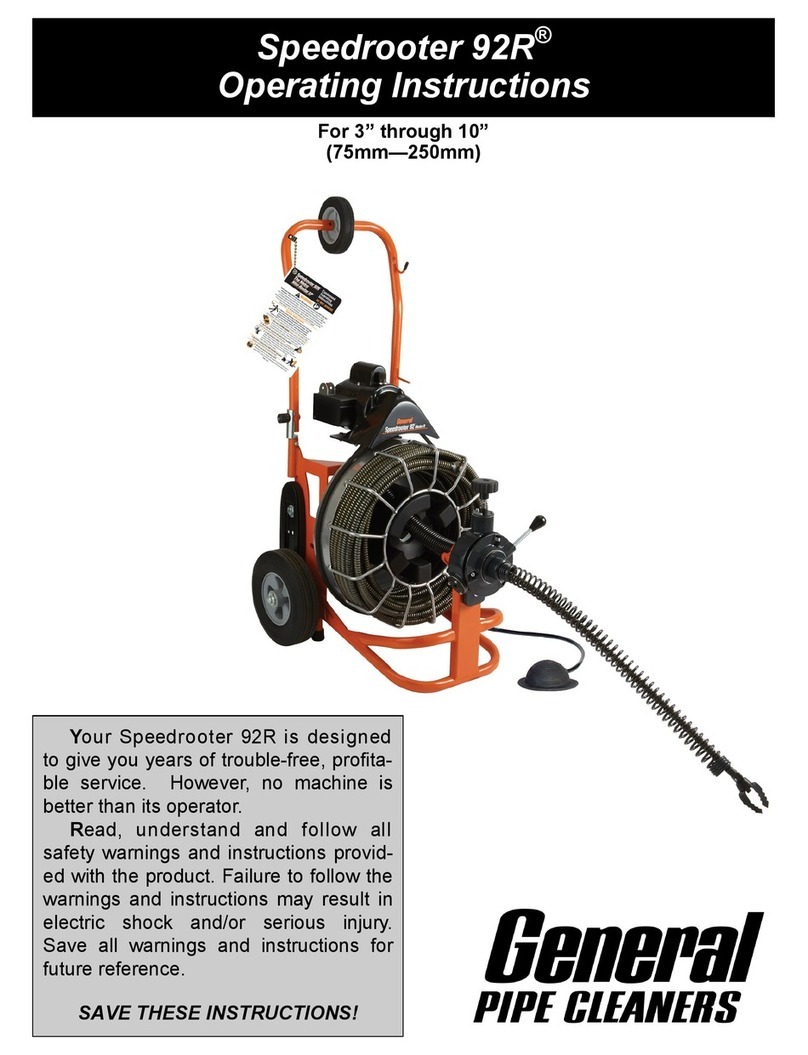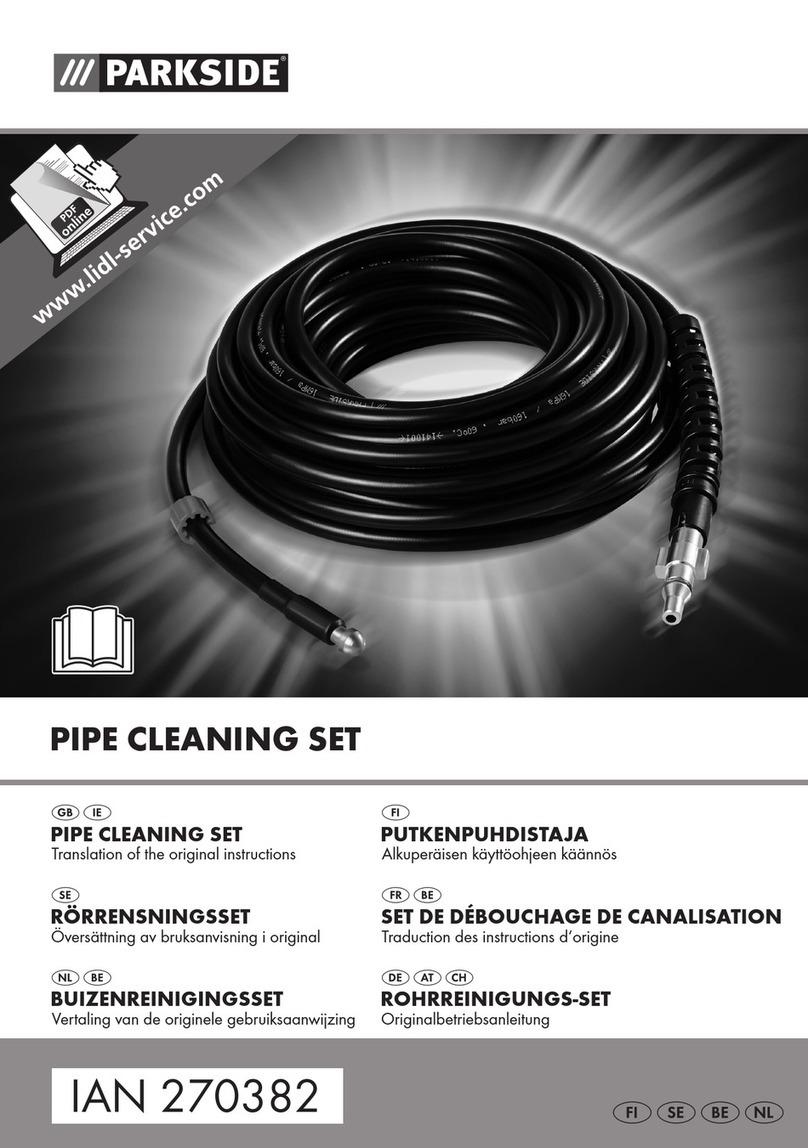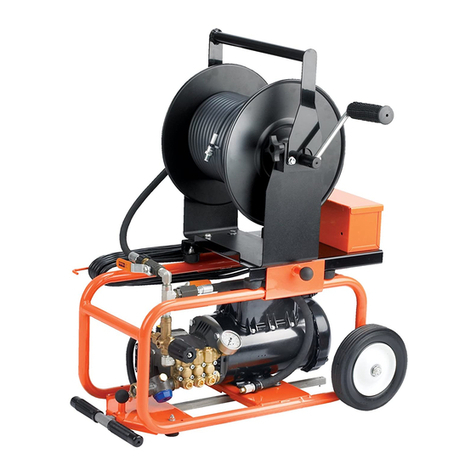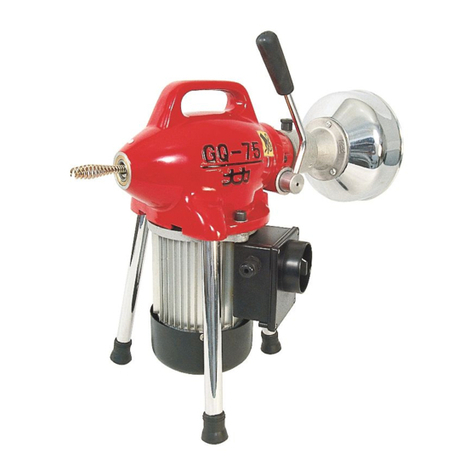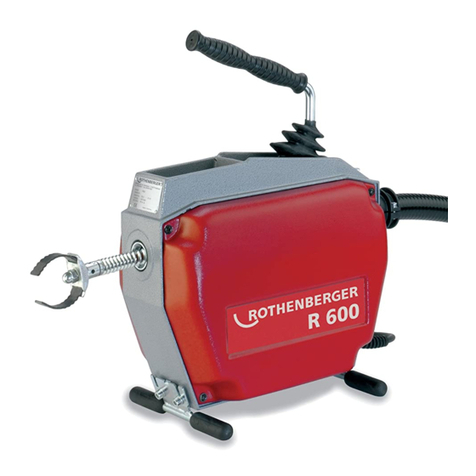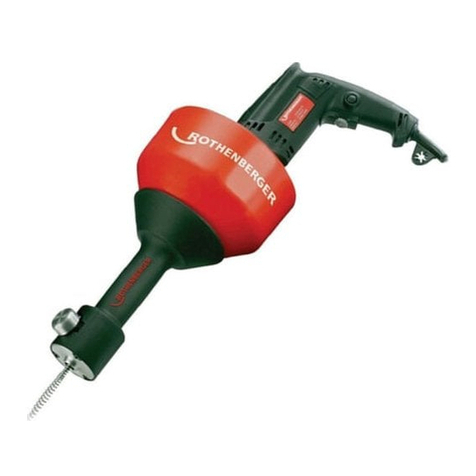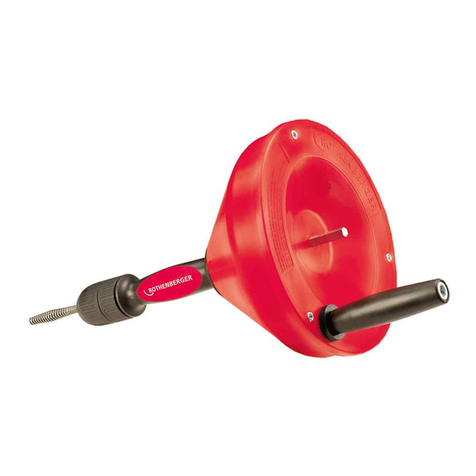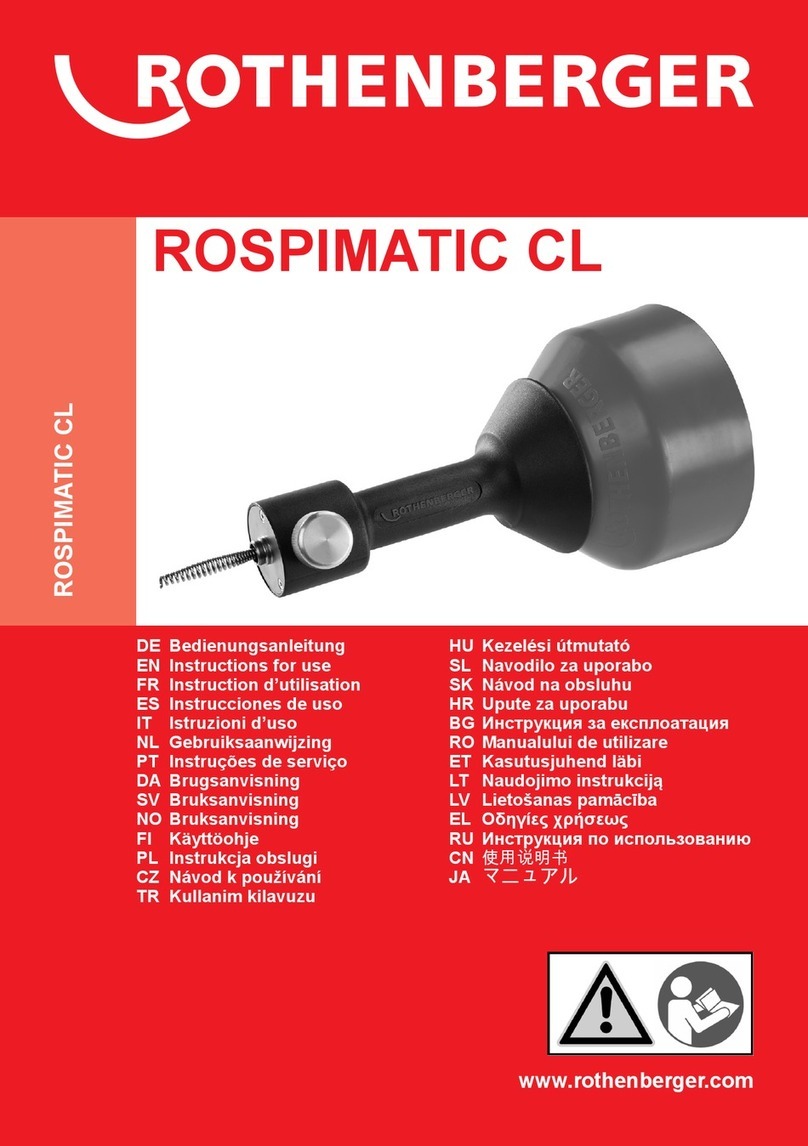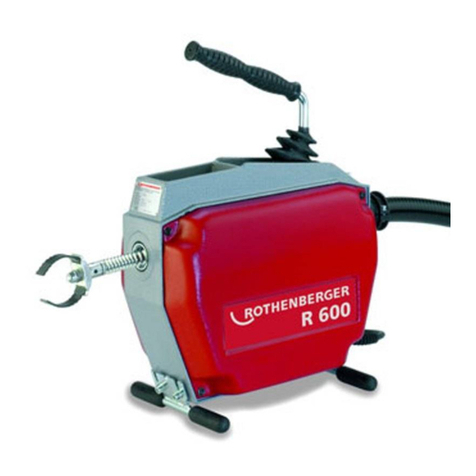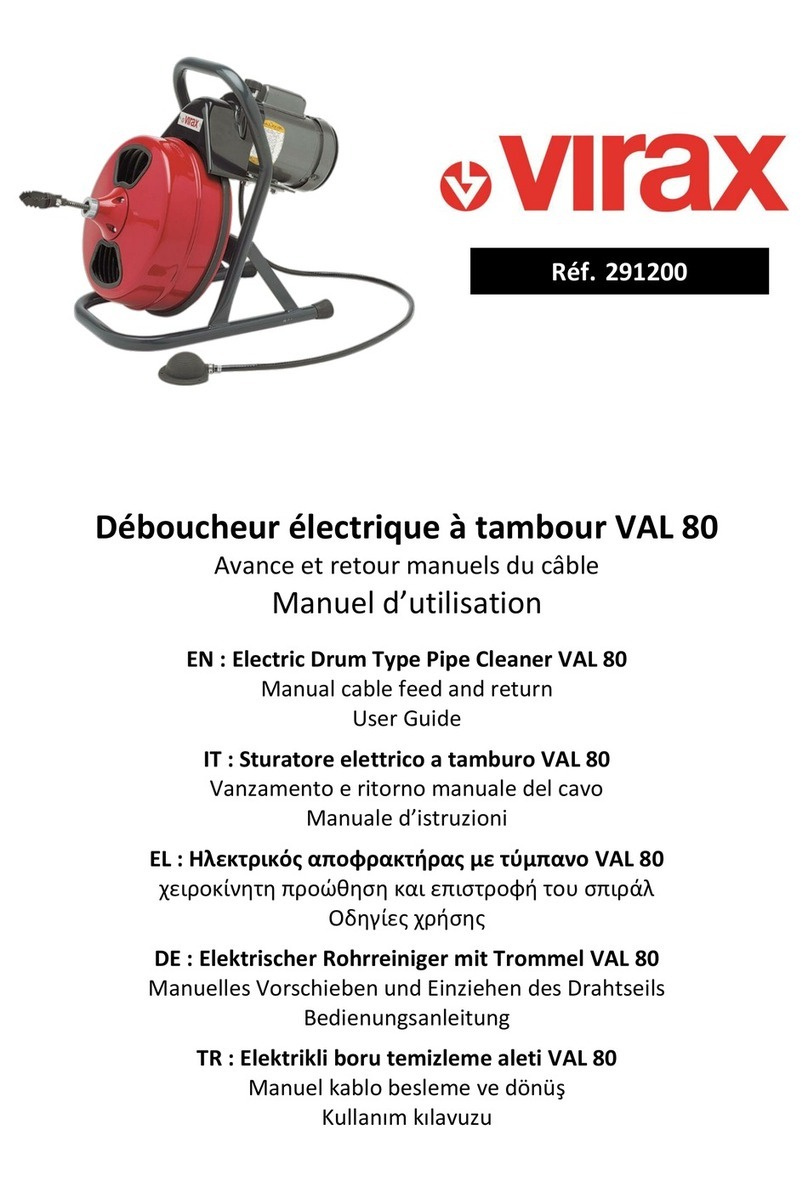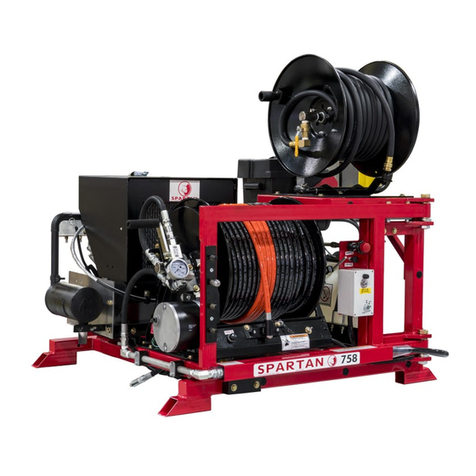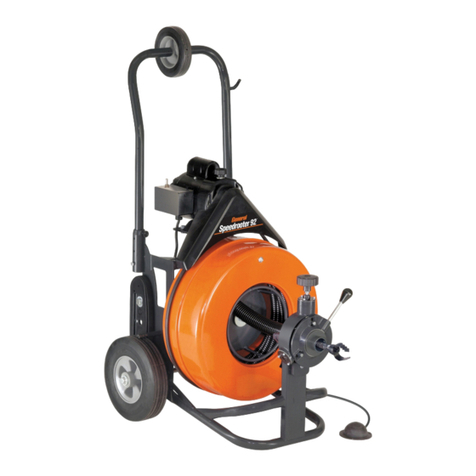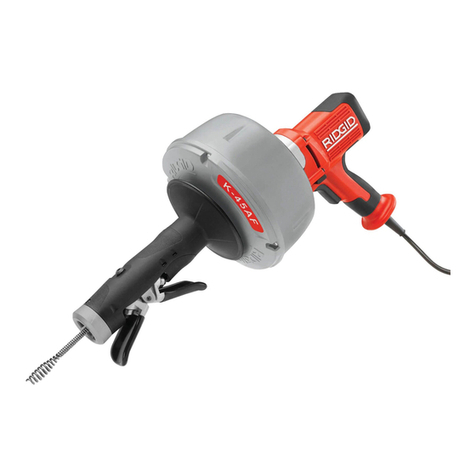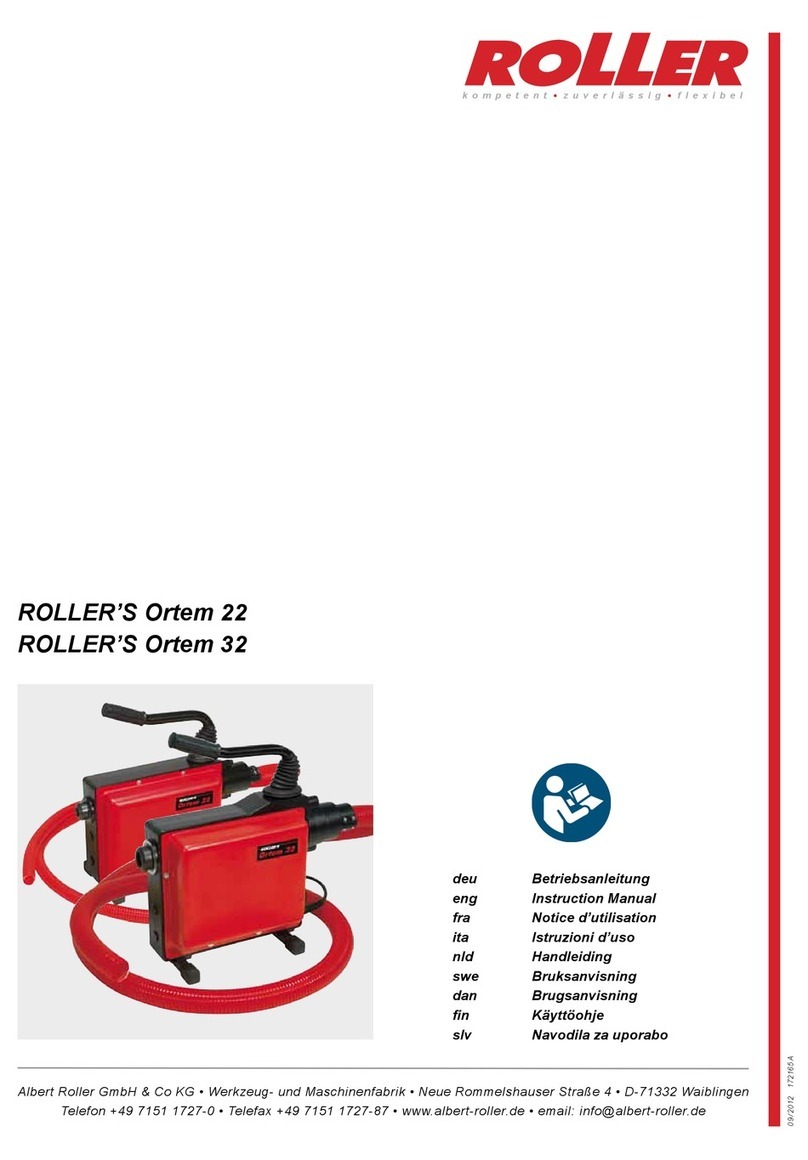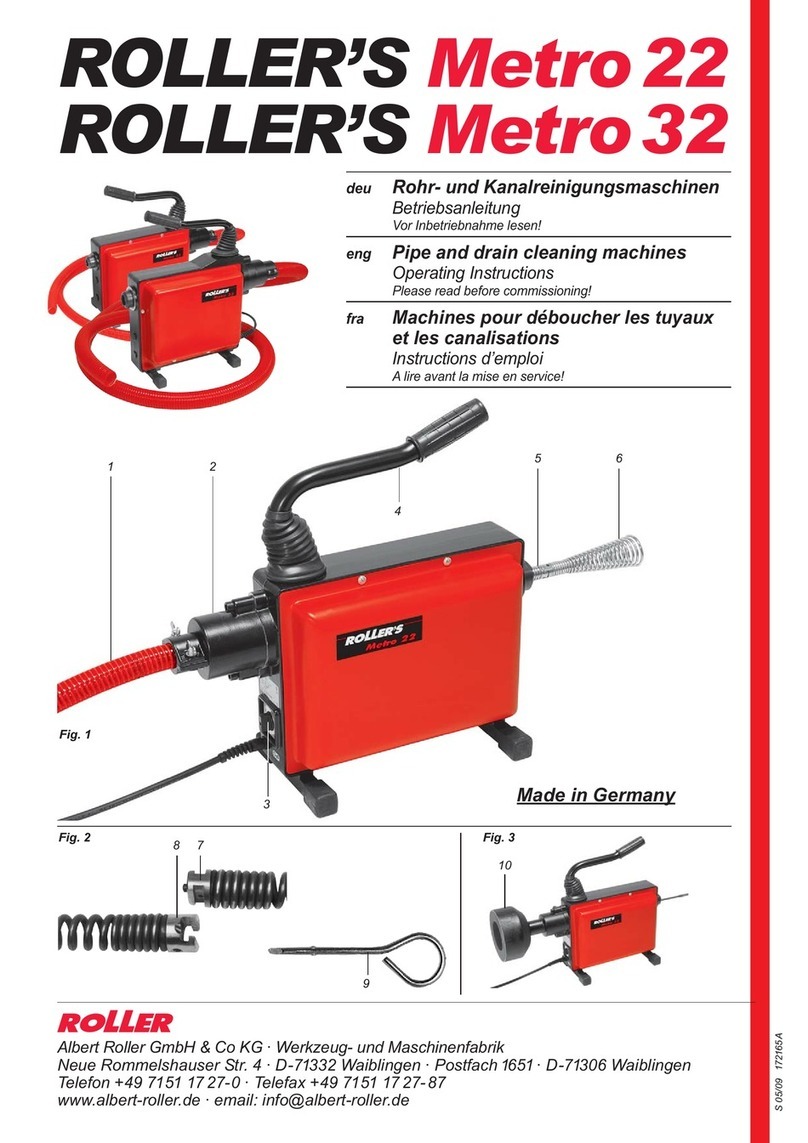
14
ENGLISH
Only work on perfect lines installed according the “VDE regulations“.
The spirals must never run over the guide tube!
Mechanical pipe cleaning should always be undertaken from above in the direction of the stop
plug.
Ensure that no water taps leading to the pipe to be processed are actuated during the pipe
cleaning. Congestion can occur here!
During pipe cleaning never leave the machine unobserved!
: All rotating parts are made safe through use of protective covers.
Removal and/ or operation without these protective covers is strictly forbidden
!
Secure the operation site (the road, the shaft) so that no uninvolved persons suffer injuries and
always cover open shafts or gullies.
Check the area to be investigated with a gas warner for the presence of poisonous or explosive
gases!
The machine and the accessories should be cleaned and disinfected after every use.
The recommended personal protective equipment should be worn whenever any work is done:
Safety helmet, safety shoes, safety vest!
The hands should be cleaned and disinfected after every activity; there is increased risk of infec-
tion by pathogens!
1.3 Residual risks
Even when observing all of the safety instructions there are still some residual risks remaining,
for example: spirals can overturn (create a loop if the operating arc is too large) thereby creating
the risk of clamping. Spirals under tension can spring out of the pipe ~ a risk of injury!
1.4 Intended use
The pipe cleaning machines may only be used to clean pipes of the following diameters:
R550: 40-100mm, R600-650: 20-150mm, R750: 50-200mm
The pipe cleaning machines are only designed for short term operation and may therefore only
be operated without interruption for a maximum of 15 minutes! Do not use this product in any
other way as stated for normal use!
2 Technical Data / Applications
Voltage ................................
...........................
230 - 240 V, 50 Hz, 110-115V, 50-60Hz
R550 R600 R650 R750
Article number: 230V
................................
72686 ...........
72687 ........... 72688 ...........
72689
110/115V
............................
72631 ...........
72869 ........... 72633 ...........
72634
Output P1 (W) ................................
440 ...............
690 ............... 1350.............
1400
Operating speed (min
-1
)
................................
575 ...............
460 ............... 620 ..............
460
Weight (kg) ca. ................................
15 .................
20,9 .............. 22,8 .............
29,5
Spiral size (mm) ................................
Ø 16 .............
Ø 16/22 ......... Ø 16/22 ........
Ø 22/32
Spiral size with accessories (mm)
Ø 8/10 ..........
Ø 8/10........... Ø 8/10 ..........
Ø 8/10/16
Max. working length (m)
................................
40 .................
60 ................. 65 ................
80
Pipe diameter working range (mm)
Ø 20-100 ......
Ø 20-150 ...... Ø 20-150 ......
Ø 20-200
Operating mode ................................
S2 15min. .....
S2 15min ...... S2 15min .....
S2 15min
Protection type ................................
IP X4 ............
IP X4 ............ IP X4 ............
IP X4
Noise pressure level L
pA
¦ K
pA
................... 75 ¦ 3 ............
75 ¦ 3 ............ 80 ¦ 3 ............
80 ¦ 3
Sound power level L
WA
¦ K
WA
.................... 86 ¦ 3 ............
86 ¦ 3 ............ 91 ¦ 3 ............
91 ¦ 3
The noise level during operation can exceed 85 dB (A). Wear hearing protection!
Measured values determined in accordance with EN 62841-1.
Vibration total value m/s
2
¦ K
...........................
< 2,5 ¦ 1,5 .....
< 2,5 ¦ 1,5 .....
< 2,5 ¦ 1,5 ...... < 2,5 ¦ 1,5

